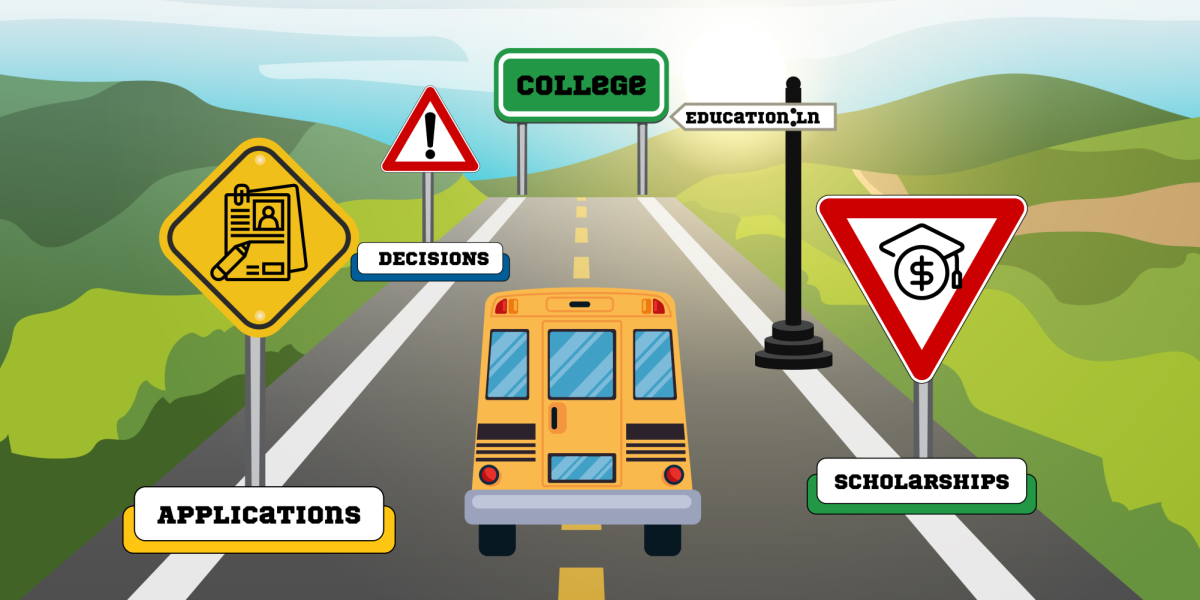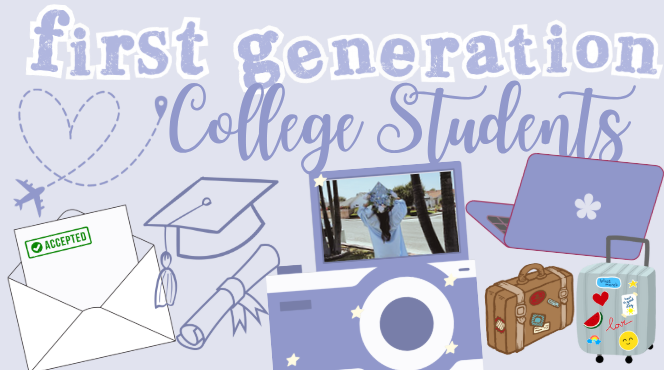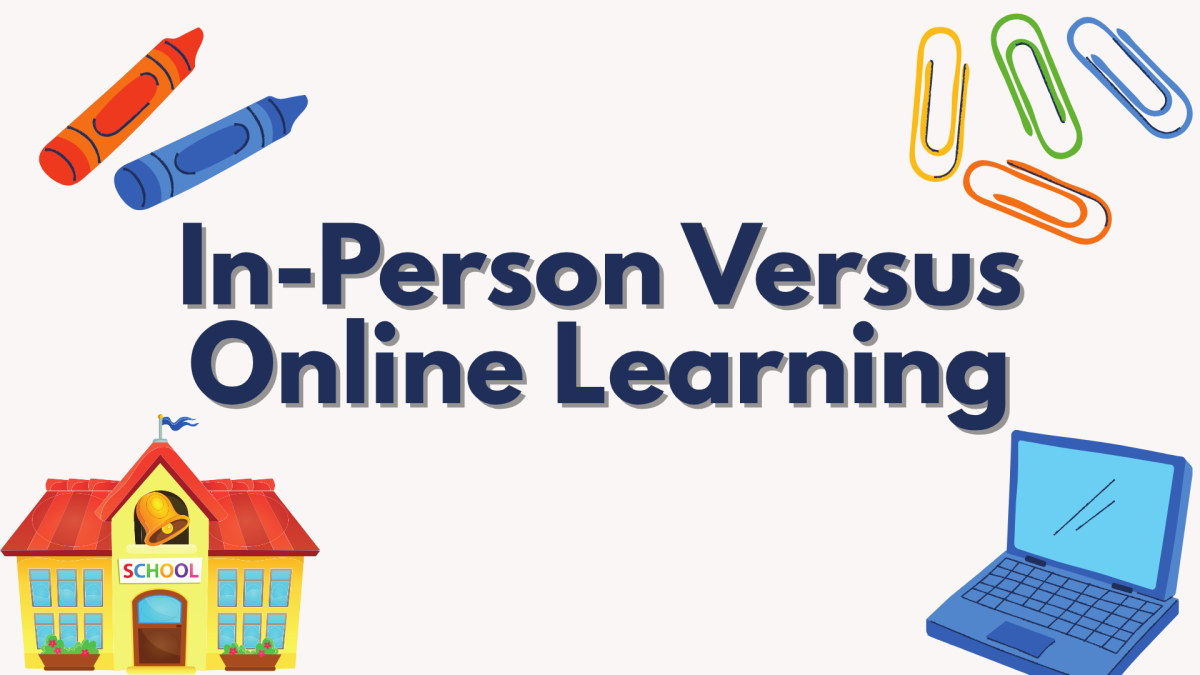As the college admissions decision season comes to a close, more and more seniors are making exciting and monumental decisions. While the prospect of continued education and career-focused learning sparks motivation for success and future planning, it also leaves a gap impossible to avoid: financial debt.
With each school acceptance lingers the question, “How much will it cost to attend this school?” These concerns and worries could make the college admission process seem complicated and overwhelming, but with assistance from scholarships, grants and need-based aid, the college admissions process can actually be concise and financially forgiving.
Advice for Beginning Your Admission Journey
As you settle into the college admissions process, it is important to prioritize organization, as you’ll receive crucial information through emails and other documents.
HBHS senior Sadie McClelland shares her method for organizing her information.
“I have a Google spreadsheet with all my colleges. I have the college name, where it is, the acceptance rate, what major I am applying to for each school, and I have all of my links to admissions and status pages,” says McClelland.
By keeping your materials in an organized folder, spreadsheet, or document, you allow yourself easy access to information that will assist you efficiently through deadlines and lay out your expected tasks and supplements clearly.
Additionally, Martha Wait-Hubner of the HBHS College and Career Center advises students to take direction to distinguish between their personal and high school materials, and college essentials.
“Set up a Gmail that is just for your college-going adventure, and use that email to do search engines and to organize scholarship and college application information so it stays there and doesn’t get messed up with other personal emails,” said Wait-Hubner.
With the separation of personal and school emails and college admission or scholarship emails, students can differentiate between information and tasks, allowing them to stay academically motivated while making important progress in the college admissions journey.
In terms of on-campus support and materials, the College and Career Center is dedicated to making the college admissions journey as smooth and efficient as possible. They assist students with local college information, scholarship opportunities, and even one-on-one assistance from College and Career advisor Mrs. Wait-Hubner.
On their website, the College and Career Center promotes local scholarship opportunities, offers resources for college applications, and assistance with future planning for Oilers of all grade levels.
“I strongly suggest students check the college and career website, come in and chat with me, and also get on a couple scholarship search engines, especially juniors,” said Wait-Hubner.
Scholarships and How to Find Them
Scholarships are bountiful, and the possibilities are endless with this form of financial aid. In terms of looking for them, there are search engines that serve as an accurate way to find the scholarships most suited to your education.
“They’re basically search tools where students can create a profile and put in information such as their GPA or potential majors, and it would populate a list of potential scholarships that students would be eligible for,” says Suji Lee, an HBHS school counselor who specializes in the college application process.
Typically, the results of the search engine would list the scholarship’s purpose, ideal candidate and application requirements such as essays, media submissions, or recommendation letters. From this process, the engine sorts the most ideal and compatible scholarships for students, already offering the best possible options in a matter of seconds.
“I used scholarship.com. I feel like that engine’s more reliable to do actual scholarships where they ask for essays or letters of recommendation,” said McClelland.
In addition to standard scholarship engines with a variety of options, alternative engines can offer more accessible scholarships to students.
“There’s an engine called Raise Me and only some colleges use it. It’s a micro-scholarship website where the colleges there will award students money based on little things they’re doing such as getting an ‘A’ grade or accomplishments in an extracurricular opportunity,” said Lee.
There are also local scholarships that support the students of the Huntington Beach community. These smaller and exclusive opportunities provide Huntington Beach students with a greater chance of achievement due to the smaller pool of applicants and shorter deadlines.
“We want to encourage students to look at the local scholarships as a head to that finish line because a lot of those are serving local students,” says Mrs. Lee.
After The Storm
Finally, once the rigorous work of submitting applications is done, students will receive admission and scholarship offers. Some admission offers could be an overview of scholarships or grants a student will receive. Typically, students will receive a full financial aid package and summary following this acceptance.
“Once a student gets a financial aid offer, it’s really important to do a breakdown of the letter, to understand the terminology and what each form of aid is,” said Lee.
Financial aid packages can include a variety of different types of aid for students, including grants, scholarships or loans. Grants and scholarships are school specific offers of financial aid that students will not be required to pay back. On the other hand, loans will issue a finite amount of aid that students will be required to pay back with accrued interest. Finally, federal work study agreements will require students to partake in on campus work in exchange for money directed at paying off tuition costs.
These financial aid offers depend on the student’s financial needs, merit, or specific application, and can occasionally be renewed for future terms.
In the aftermath of receiving college admissions decisions, it’s important for students to utilize the same organizational skills that assisted them in admissions season and make considerate and careful choices.
“Eventually, when everything comes in, find a way to lay everything out and organize the information. I think for some students using a pros and cons list may be helpful. Still, give every school a fair shake and evaluate if it’s a good academic fit, social fit and obviously that financial fit is really important too,” said Lee.
Finally, in the midst of your decisions and commitments, it’s important to consider the best options for you and your future, as well as celebrate your efforts, accomplishments and acceptances.








